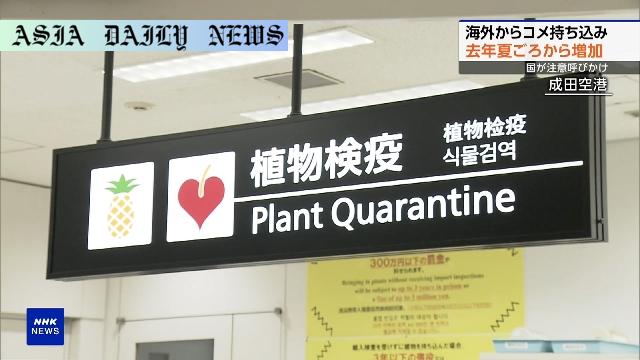Rice Prices: Japanese travelers bringing rice from abroad as costs soar; officials stress strict import certificates.
- Key Point 1: Japanese travelers are bringing rice from abroad due to high domestic prices.
- Key Point 2: Importing polished rice to Japan requires inspection certificates.
- Key Point 3: Officials urge travelers to follow regulations during the spring travel peak.

Rising Demand for International Rice Amid Domestic Price Surge
With the cost of staples like rice soaring in Japan, a growing number of Japanese travelers are turning to overseas purchases to reduce their financial burden. As of mid-April, the agriculture ministry reported that the average price for a 5-kilogram bag of rice reached 4,217 yen, roughly 30 dollars. This marks a significant increase over the past year, with prices more than doubling. Faced with such economic pressure, many Japanese citizens traveling to nearby Asian countries like Thailand, India, and South Korea have begun bringing rice back home with them.
Challenges of Importing Polished Rice into Japan
However, the process of importing rice into Japan involves strict regulations. To bring polished rice legally into the country, travelers must obtain inspection certificates from authorized government organizations in the respective exporting countries. Upon entry into Japan, the imported rice must also undergo governmental inspection. These regulations aim to maintain agricultural quarantine standards and health safety, a priority for plant quarantine officials stationed in checkpoints like Narita Airport near Tokyo.
Growing Trend Observed During Travel Peaks
Reports from quarantine officers indicate that the trend of bringing international rice into Japan began accelerating around the summer of the previous year and saw a sharp rise starting in March 2023. The spring holiday season, starting April 26, is expected to further fuel this trend as a larger number of travelers make trips abroad. Many returnees are reportedly carrying between 5 to 10 kilograms of rice in their luggage in an effort to mitigate rising grocery bills at home.
Regulatory Compliance and Its Implications
Authorities have intensified their efforts in spreading awareness about compliance requirements. While travelers may view these measures as cumbersome, they are essential to avoid any potential biosecurity risks that could arise from importing unchecked agricultural goods. Officials have emphasized the importance of securing proper certifications and adhering to inspection regulations, which serve to protect Japans domestic agriculture and consumers alike.
Conclusion: Adapting to Economic Pressures
The prevailing economic pressures have led to broader behavioral changes among Japans population. By opting to source staple foods like rice internationally, Japanese consumers are showing resilience and adaptability. However, compliance and education about import regulations remain key factors in ensuring that this trend does not derail domestic safety standards or disrupt agricultural stability. While foreign rice may appear as a financial reprieve for some, navigating through the intricate rules and abiding by governmental policies is crucial for a smooth process.



Commentary
Economic Shifts Leading Consumers to Explore Alternatives
As Japan grapples with surging inflation, particularly in the price of staples like rice, consumers are left with increasingly limited options. This situation has driven Japanese travelers to take unconventional measures, such as sourcing rice from neighboring countries during their trips abroad. Such adaptive behaviors underline the financial pressure many households face, revealing how economic disruptions often ripple through multiple layers of society. While inflation is not unique to Japan, it highlights inefficiencies and vulnerabilities in the global food supply chain, which continue to be exacerbated by external economic factors like climate change or international trade restrictions.
Quarantine Measures: Balancing Security and Convenience
The emphasis on strict quarantine standards in Japan illustrates the delicate balance between national biosecurity interests and individual convenience. It is understandable that authorities need rigorous checks and proper documentation to mitigate risks such as introducing foreign pests or harmful contaminants. However, the added layer of bureaucratic complexity can be burdensome for travelers who might perceive these regulations as barriers rather than safeguards. The essential challenge is in striking a balance—wherein both consumer financial relief and agricultural safety can coexist harmoniously.
The Bigger Picture: What This Indicates About Global Trade
On a broader scale, this phenomenon is indicative of evolving global trade patterns and consumer-driven solutions amid economic crises. The growing preference for international rice by Japanese citizens can also spark a healthy conversation about self-reliance versus globalization. However, sustainable development must be prioritized across the globe—a move towards policies aimed at addressing rising food costs rather than temporary fixes like importing large quantities of cheaper foreign produce. Governments, international organizations, and consumers hold responsibility for collectively ensuring systemic resiliency within this essential sector.